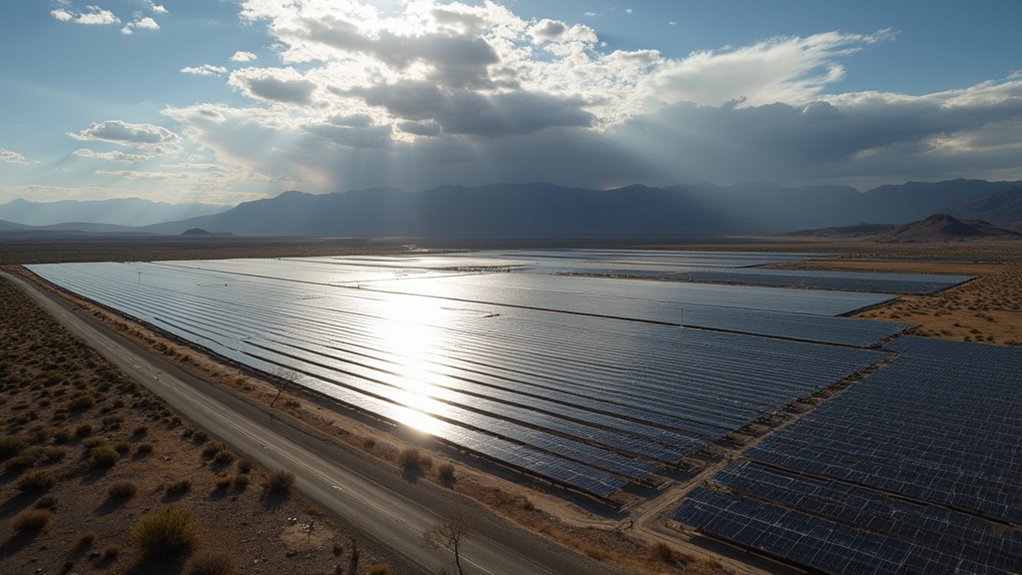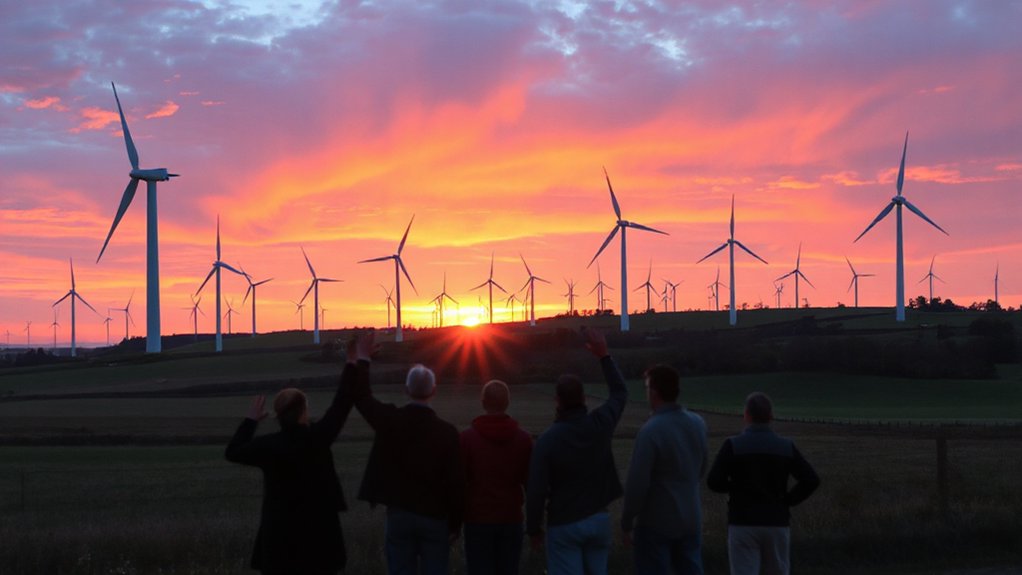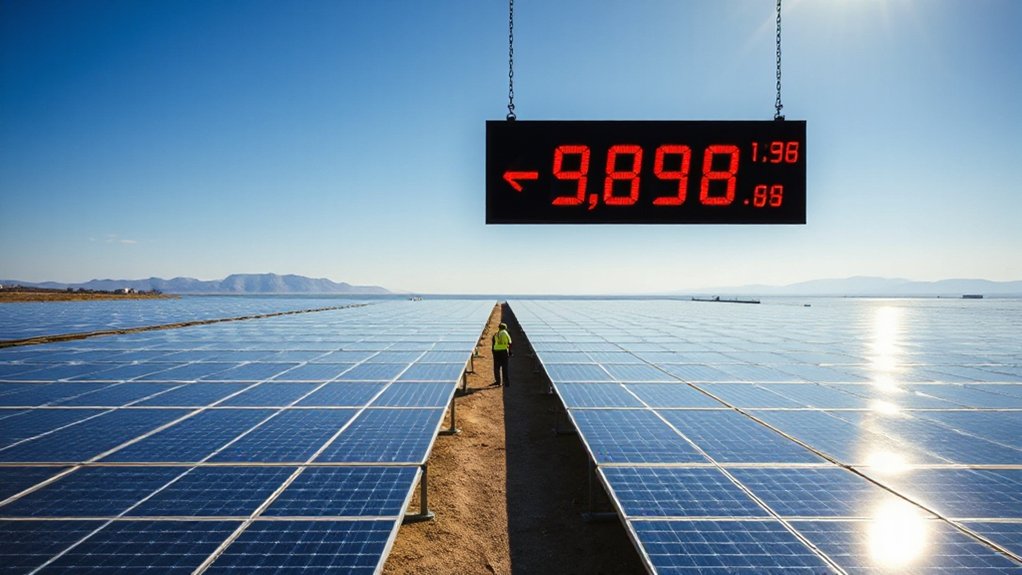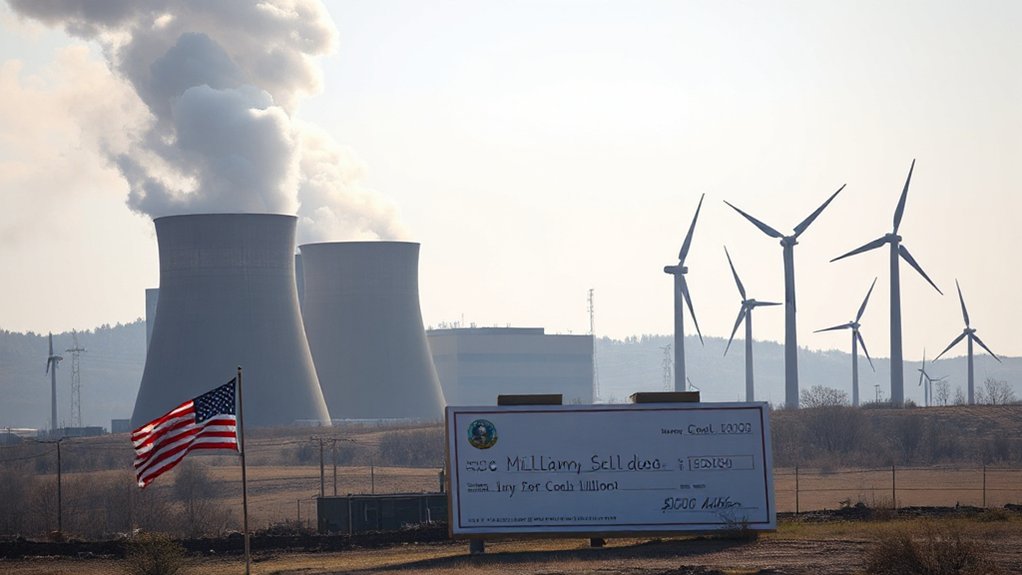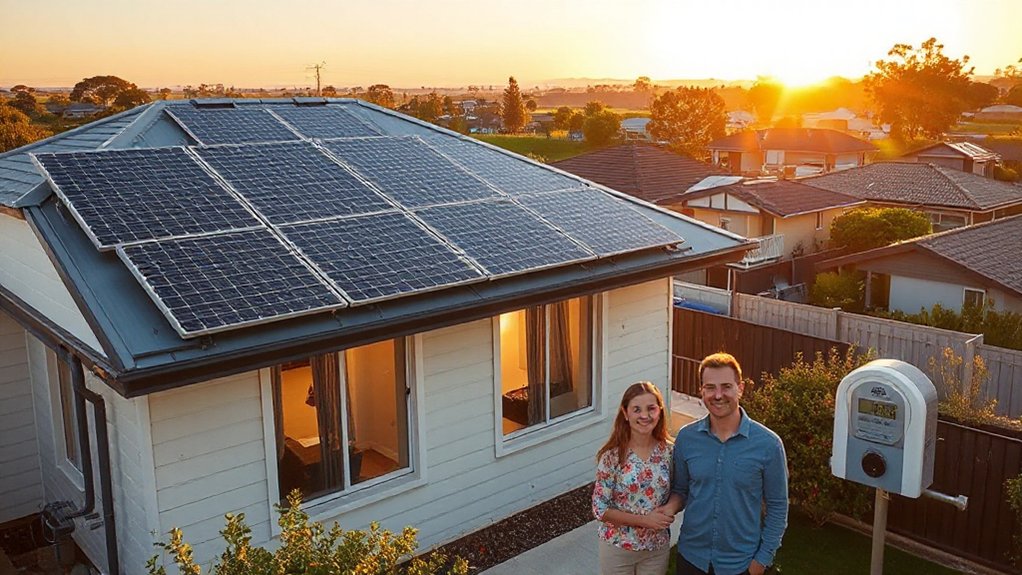A remote Alaska village is ditching diesel generators that have powered homes for decades. They’re going all-in on solar panels and wood chips. Yeah, you read that right – solar power in Alaska.
The village burned through 100,000 gallons of diesel annually just to keep the lights on and homes heated. That’s 380,000 liters for the metric folks. Diesel prices? Through the roof. Supply chains? About as reliable as a chocolate teapot in summer. The whole setup was bleeding money and choking on fumes. This 400-person community sits on the Yukon River, built around an old military base that once bustled with activity.
Diesel prices through the roof, supply chains unreliable as chocolate teapots – the whole setup bleeding money and choking on fumes.
Now they’re building a 1.5-megawatt solar farm that’ll handle everything during those endless summer days. When the sun finally sets – and it does, eventually – battery storage kicks in. The system’s so slick they can shut down diesel generators for up to 1,000 hours yearly. That’s over a month of diesel-free living.
But wait, there’s more. A biomass plant‘s already cranking away, burning local wood instead of imported fuel. Cordwood, pellets, woodchips – whatever’s handy. Alaska’s already installed over 50 of these units statewide, heating schools and community centers without touching a drop of diesel. The system works even when temperatures plunge to 60 below, making it a game-changer for survival in America’s last frontier.
The locals aren’t just watching from the sidelines either. They’re getting trained to install and maintain these systems. Real jobs, real skills. Not bad for a place where career options used to be limited to “diesel mechanic” or “person who orders diesel.”
Will electricity bills plummet overnight? Nope. But at least prices won’t swing like a hammock in a hurricane every time oil markets hiccup. The money saved on diesel can actually stay in the community instead of floating away on a fuel barge.
The whole project tackles Alaska’s climate vulnerability head-on. Less diesel means fewer emissions, cleaner air, and maybe – just maybe – a shot at keeping Arctic communities livable as temperatures climb.
These microgrids with battery backup work even when it’s cold enough to freeze your eyeballs shut. Unlike other renewables, this approach offers a high capacity factor similar to geothermal energy’s impressive 96% reliability rate. It’s radical, sure. But when your other option is burning dinosaur juice at premium prices forever, solar panels and wood chips start looking pretty smart.
References
- https://abcnews.go.com/Business/wireStory/rural-alaska-village-turns-solar-biomass-energies-cut-122966692
- https://www.nature.org/content/dam/tnc/nature/en/documents/AlaskaRenewableEnergy2021.pdf
- https://www.youtube.com/watch?v=W8vdpcpLlDg
- https://alaskarenewableenergy.org/resources/library/page/2/
- https://digital.akbizmag.com/issue/december-2019/alaska-and-renewable-energy/

